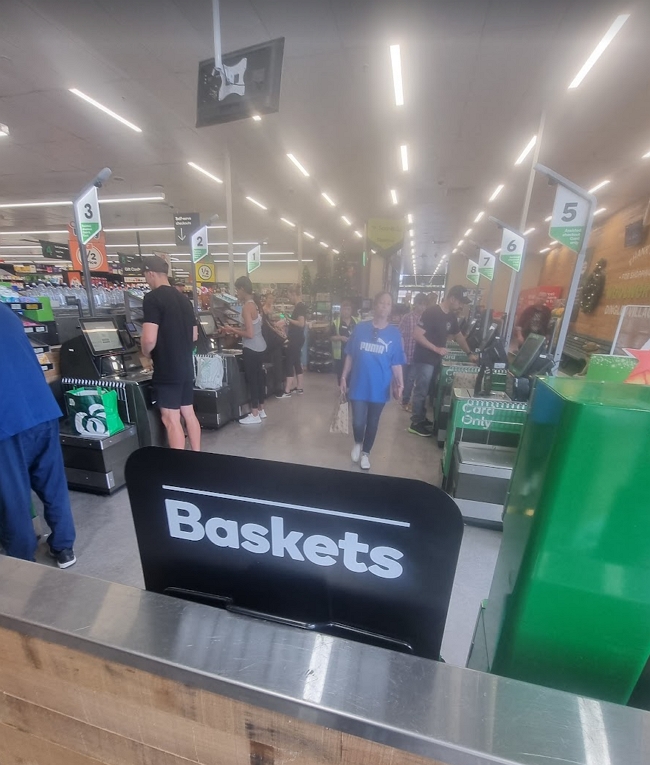
One of our competitors has announced the release of what they call a "first" for Australian retailers: self-checkout point-of-sale (POS) software. Now, that is a bit of a tall claim. Our company and several others have already developed and provided Self-checkout POS software for local businesses years ago. Click here, and you will find a few. They are also commonly used in restaurants, and I would suggest all restaurants look into it. So their announcement may help bring this technology to the forefront of our market.
Now would be a good time to objectively review the pros and cons of self-checkout systems in most retail stores. While the technology functions as intended, like any such solution, some strengths and limitations exist. I hope here to give you a balanced look at these systems' opportunities and challenges from someone who has had experience with it, to help you make informed decisions about the realities of this Retail technology.
Now self-checkout kiosks are staples in major supermarket chains with mixed reactions. To many of us now, scanning our own groceries has become routine with such systems in supermarkets. These retail giants tout the efficiencies gained from their lower staffing needs as they have replaced rows of cashiers with a handful of overseers profiting from payroll savings. This formula works for such high-volume big-box players. But does it translate to other stores? Well, clearly not. Many large shops that could afford them do not use them. Like everything, it has its pluses and minuses.
Supermarkets Consider the Self-Checkout Scene
Let's review the standard supermarket setup:
- Goods being sold are simple to process.
- Stations are typically placed with 6-20 kiosks and 1-2 attendants overseeing the usage
- Shoppers scan and bag their own items, then pay via machine interfaces
- An attendant assists with errors, problem items and customer confusion
- 1-2 manned checkout lanes are still staffed for shoppers wanting personal service
So, we are looking at a typical setup of 2 manned checkouts and eight kiosks. In a large supermarket, with one employee monitoring eight self-checkout machines. I have seen figures showing the savings of three traditional cash register operators. So, we are looking at five manned checkouts or this setup with a labour cost of three people. So they saved two salaries, instead of five people they can get by with three.
Challenges for retailers
1. Transaction Volume Variations
For a self-checkout setup to be successful, a high volume of transactions is typically required. The business model of supermarket self-checkout terminals works because they are processing many sales each day due to the scale of their operations. Implementing a similar system for stores with lower transaction volumes may make achieving a good return on investment difficult. You would likely need significant customer traffic to properly justify the costs of installing and maintaining multiple self-checkout lanes. Smaller-scale operations may find it challenging to reach the level of sales needed over time to offset the initial investment required for this automated checkout solution.
2. Staff Role
Self-service kiosks present some challenges and require a technically proficient person to maintain them properly. Issues are likely to occasionally arise with these automated systems, necessitating someone with strong technical skills to identify problems and resolve any issues. Without proper ongoing support and maintenance from a knowledgeable staff member, self-checkout kiosks risk developing technical problems, which would impact your customer experience if not promptly addressed.
Often, you need the services of an IT professional on call.
3. Physical Store Size Constraints
Although each of these kiosks uses less space than a manned checkout, the station with many kiosks and a person monitoring them does need a lot of space.
4. Cost
The upfront cost of each self-checkout kiosk is higher than a traditional manned checkout station. Many automated checkout systems also require costly ongoing maintenance and after-sales support plans.
5. Shop Theft
Experience has shown self-checkout kiosks have higher shoplifting rates than manned checkout lanes. Without a staff member directly monitoring each transaction, customers can easily underreport items or bypass scanning certain products. Cameras help, but only a little.
6. Products
You need to market products that are easy to handle, scan, and bag. We found in newsagents that large cardboard was a pain. Many products need to be extremely detailed and properly programmed into your POS Software to function with these machines; for example, the item's weight often needs to be in it.
7. Customer Confusion
Some customers hate them. You are not going to get out of a human cashier somewhere. Plus, when the kiosks work, they are great, but it can be a real pain to get it right when they play up. It takes time for your customers to get used to it.
8. They break down
When you are in a supermarket with a station of eight kiosks, if one plays up, it's okay. You have seven more working. If you only have one, well, it's a problem.
9. Foreign language support
Our kiosks had a great selling point: they could report in a foreign language, which works great in theory for a customer who knows that language. For the people monitoring the kiosk, it proved a problem when they tried to help. A kiosk with Thai letters and instructions is almost impossible for a non-Thai speaker to use.
Conclusion
While self-checkout kiosks have become commonplace in large supermarkets, their feasibility for other retailers, as shown by their slow adoption, shows they are not yet for most retailers.
Now, before I sound so negative, if you have an interest in such technology, please let us know; one shop that works well now in small business with them is restaurants.


